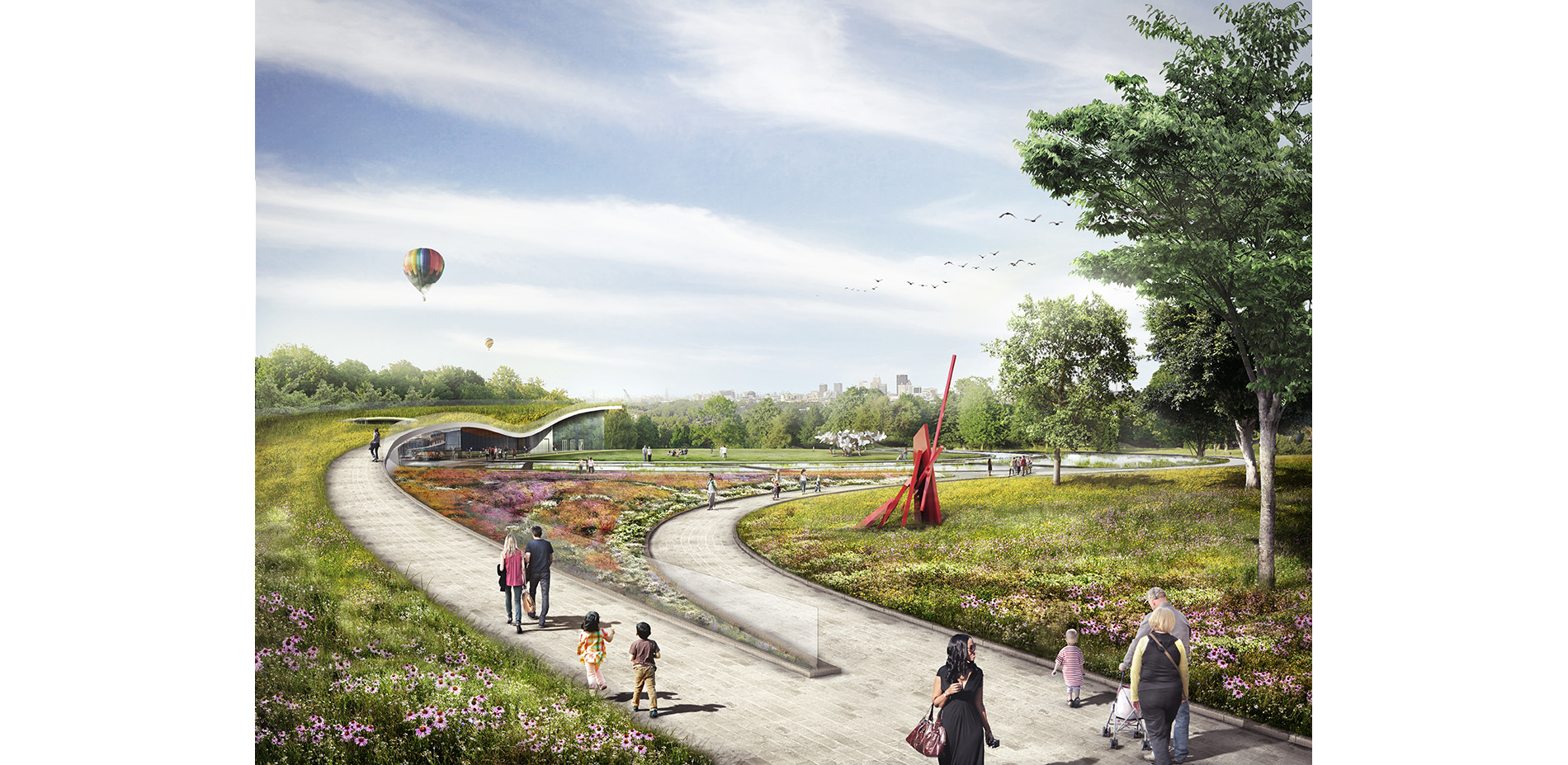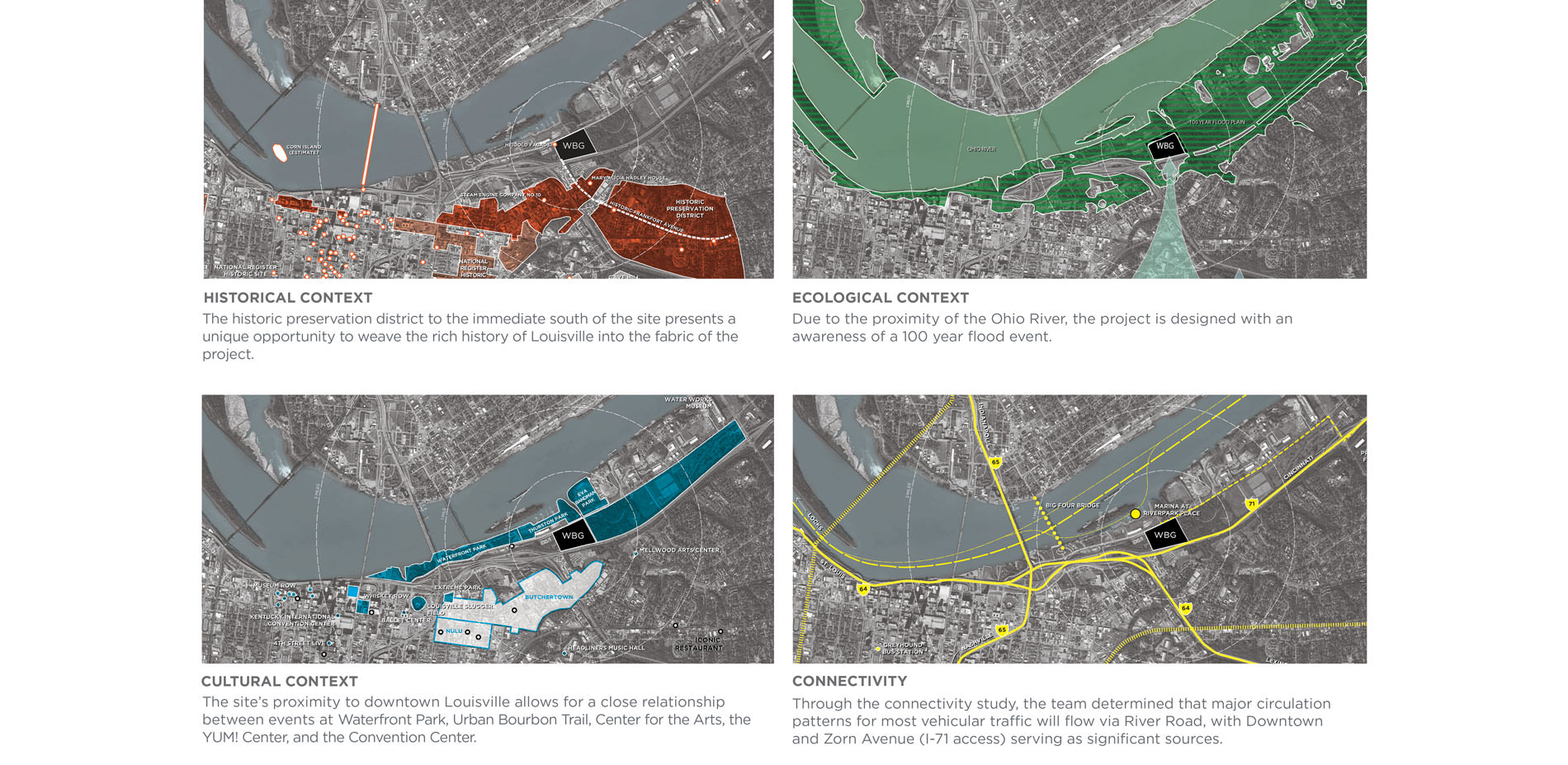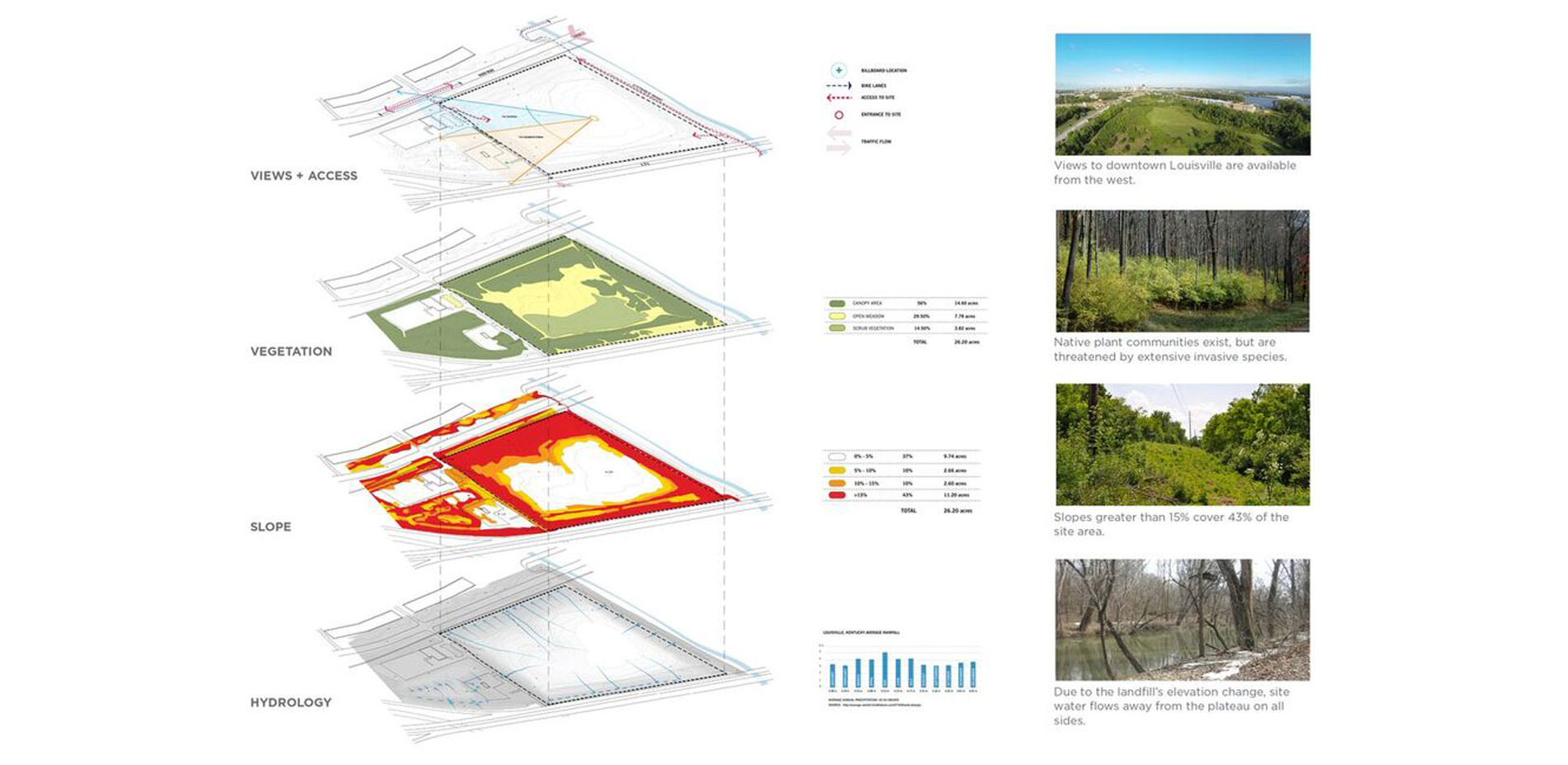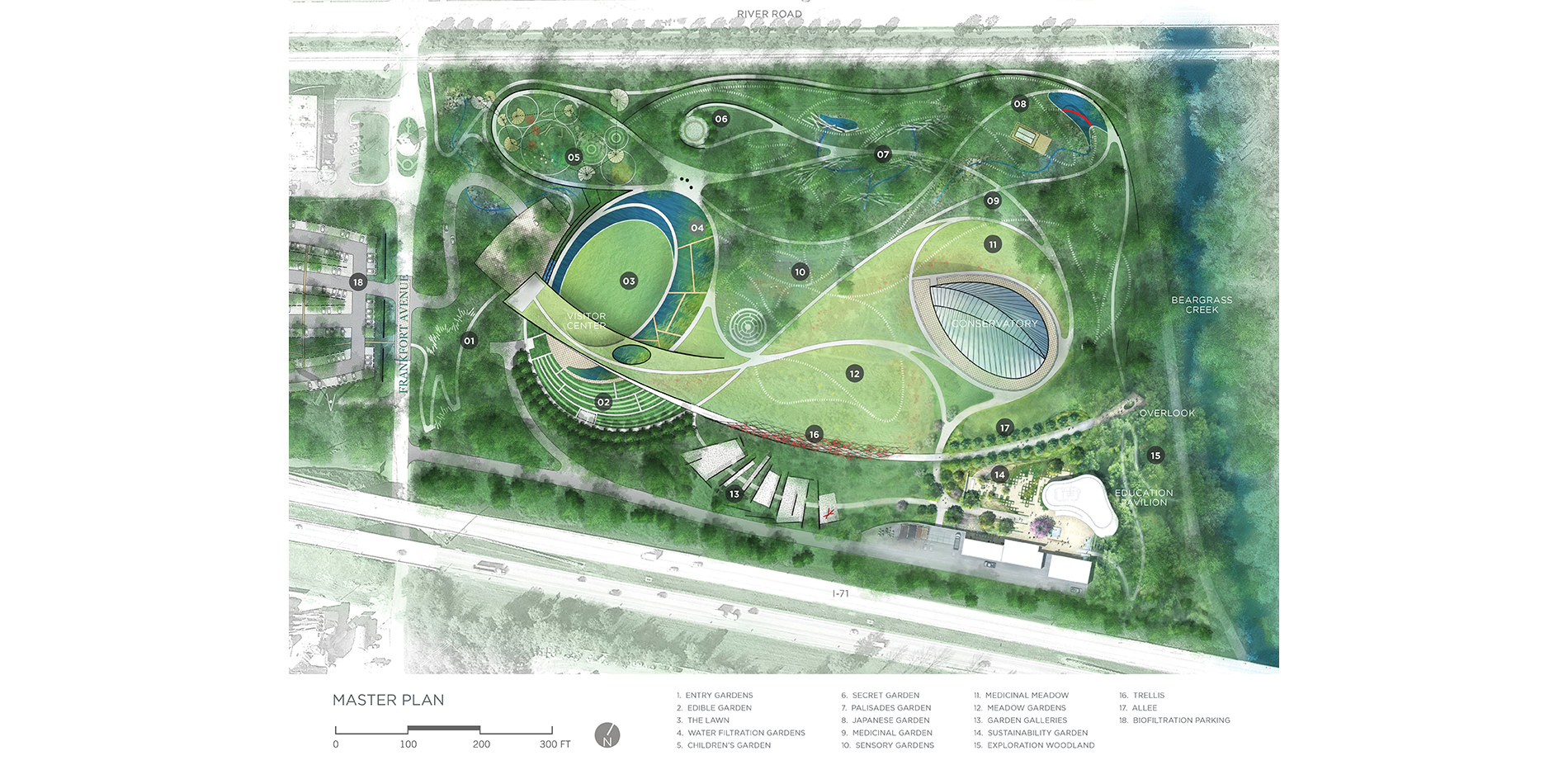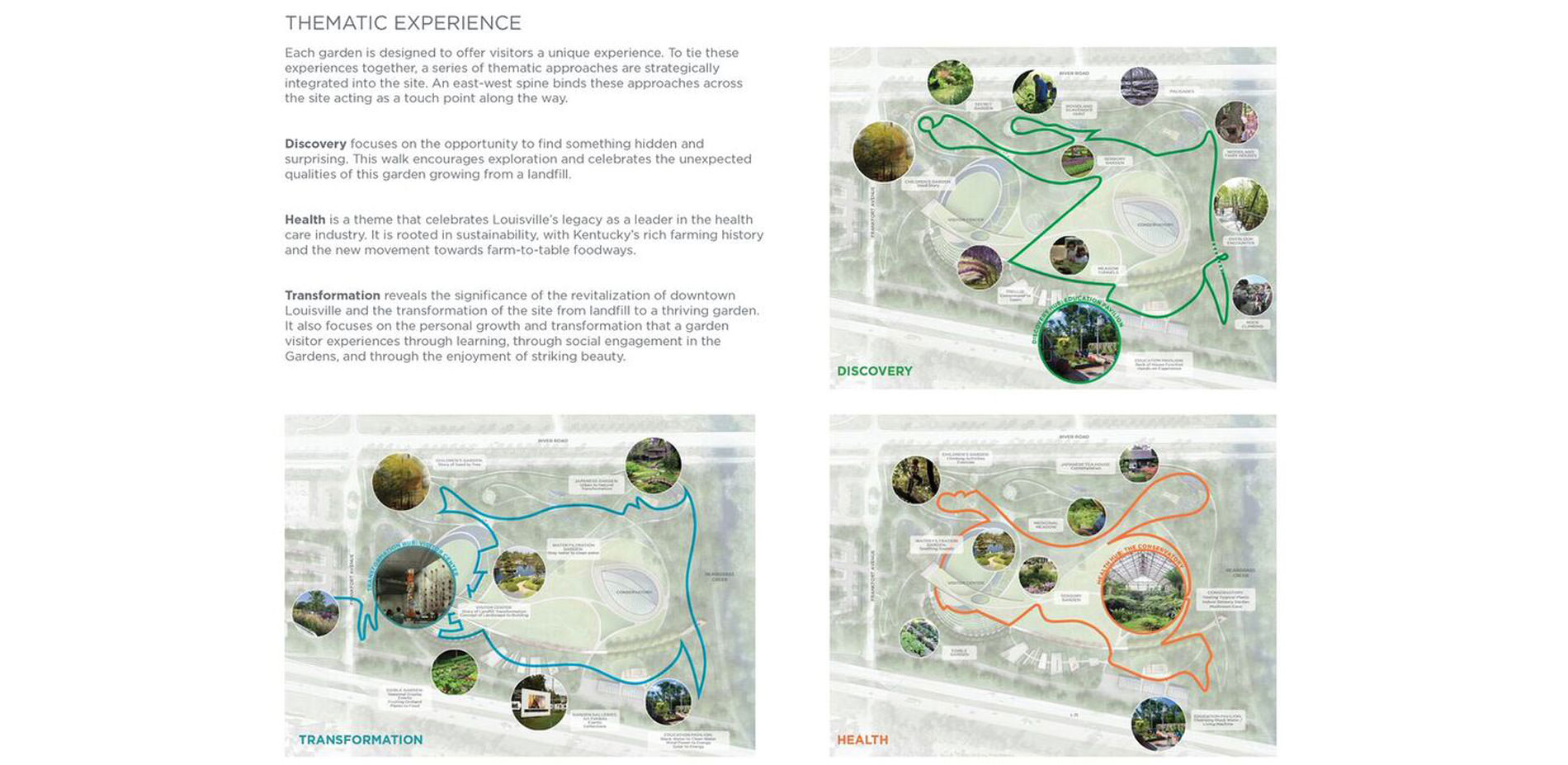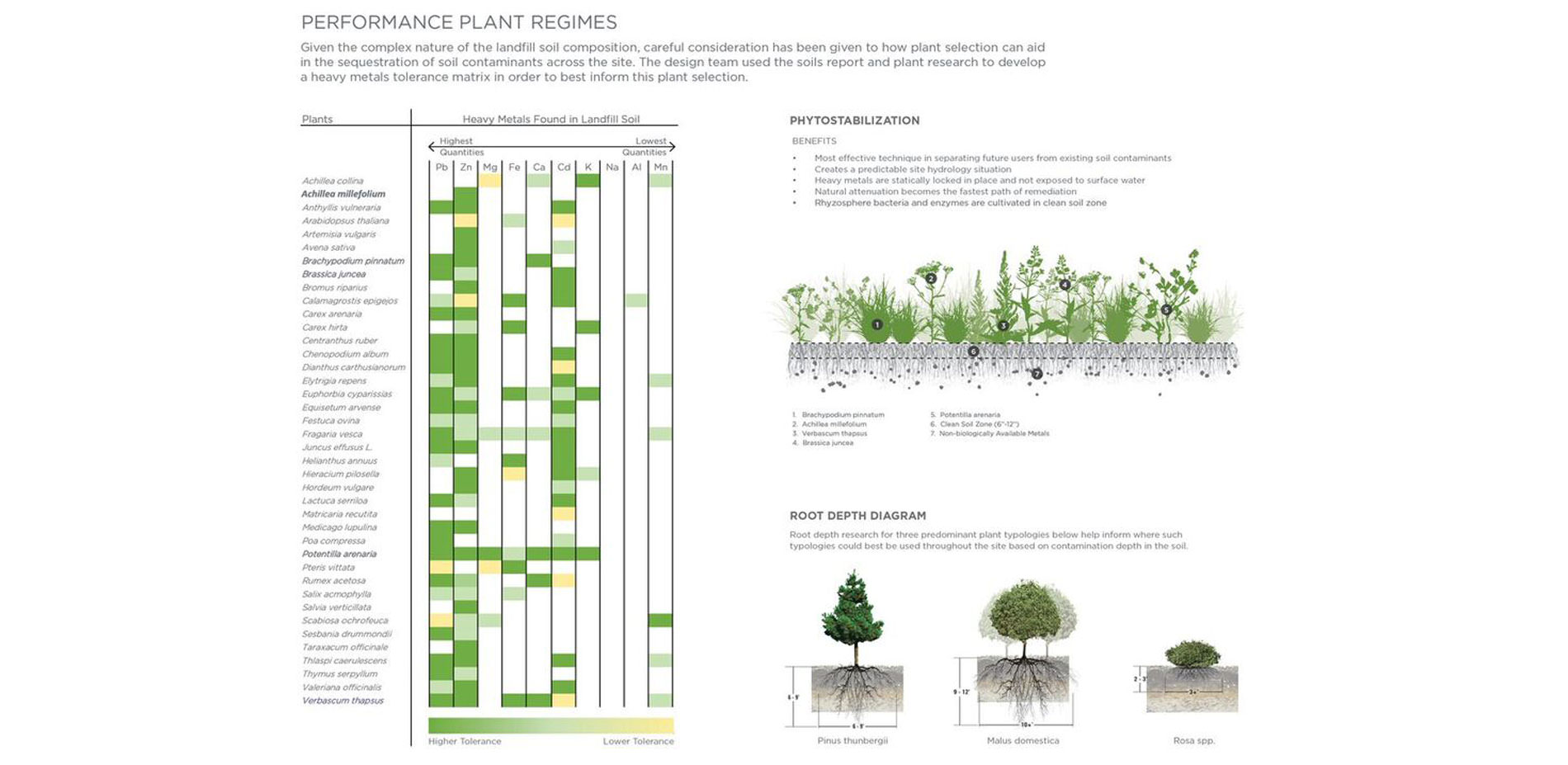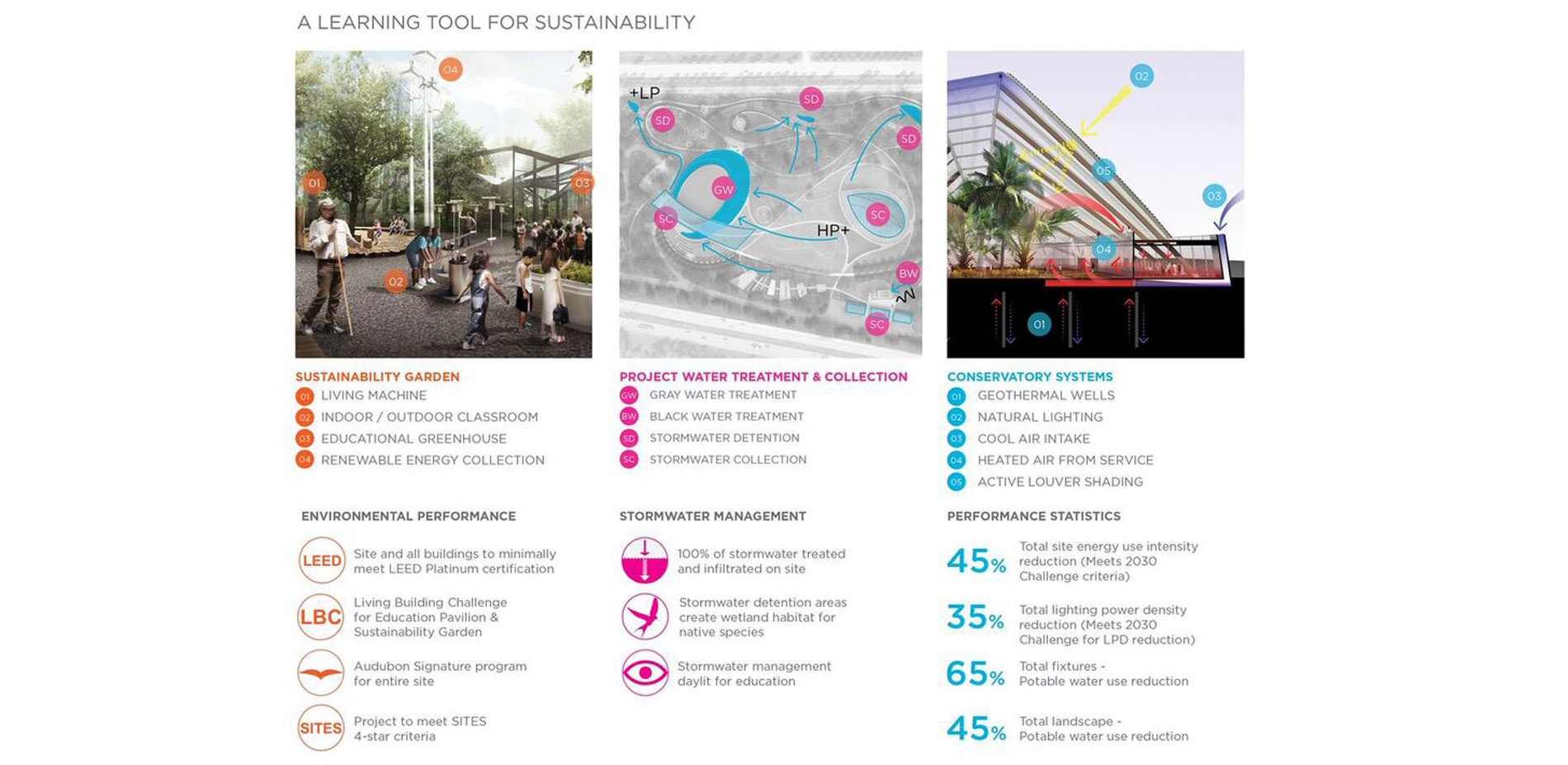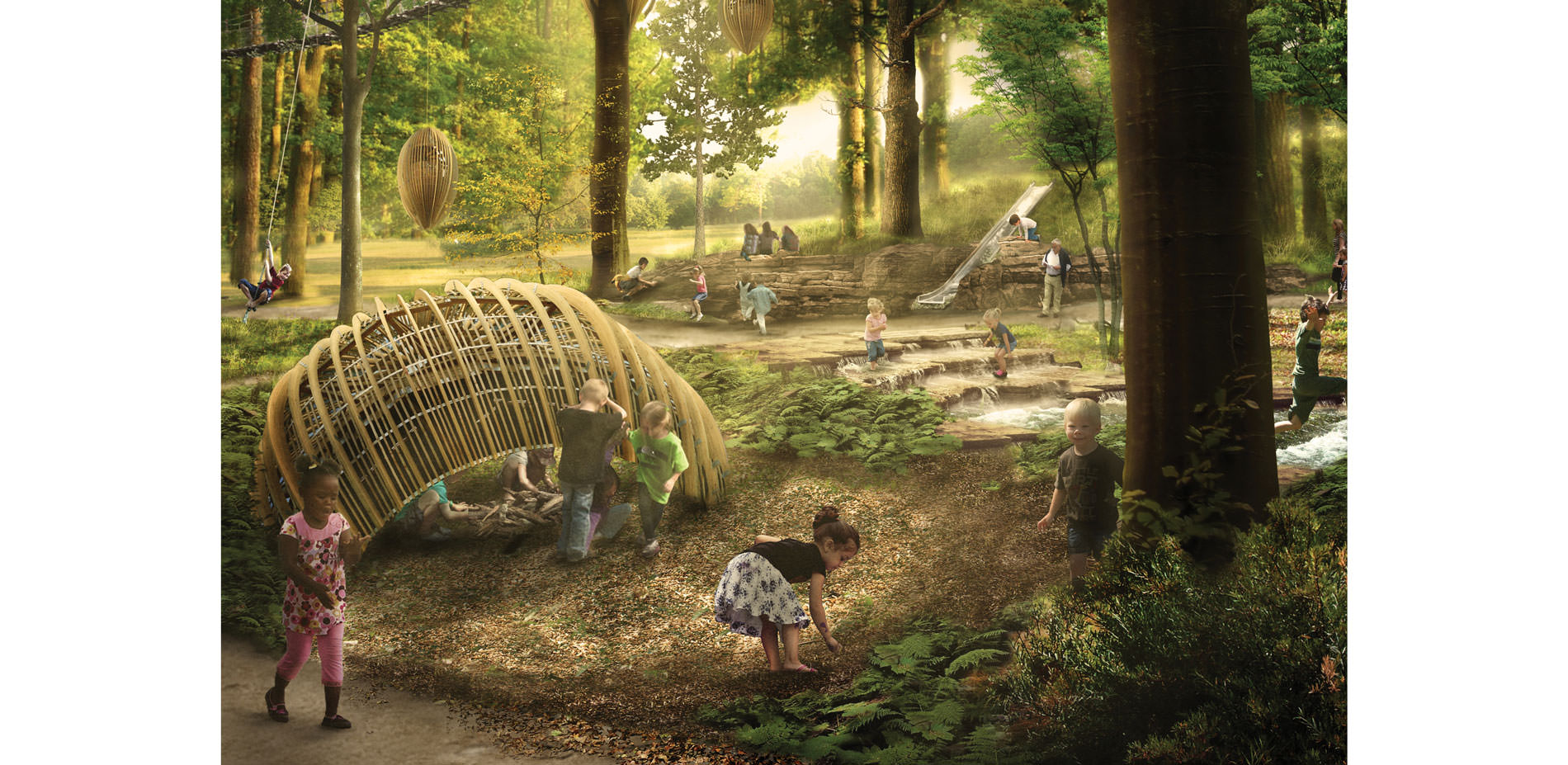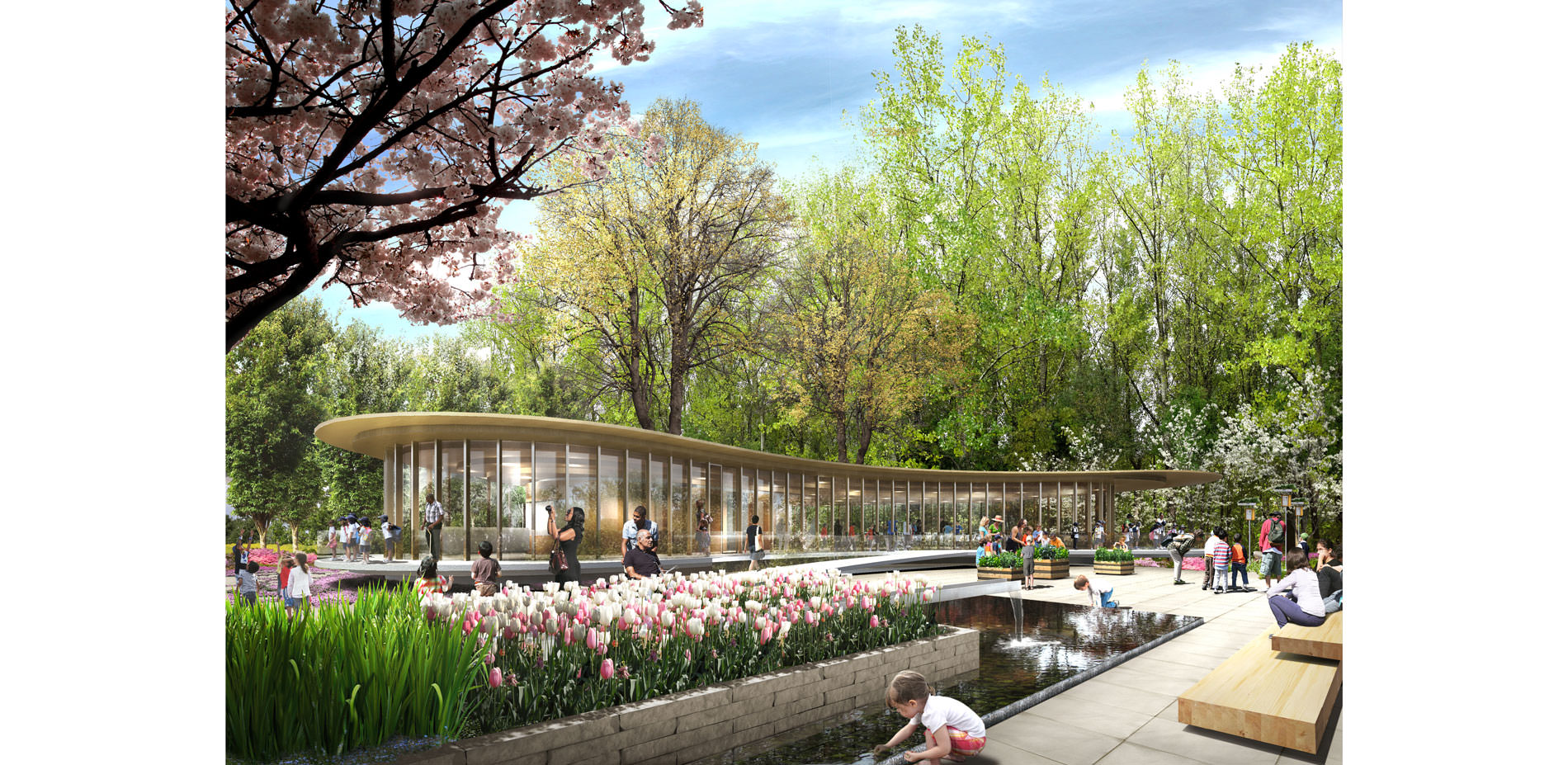Waterfront Botanical Gardens
Honor
Analysis and Planning
Louisville, KY, USA | Perkins+Will | Client: Botanica
There’s a diversity of spaces and engagement with the landscape. It skillfully takes in the treetop elements all the way down to the underground research center.
- 2017 Awards Jury
PROJECT CREDITS
PERKINS+WILL
- Leo Alvarez, FASLA, Landscape Architecture Principal
- Alexander (Zan) Stewart, ASLA, Project Manager
- Ralph Johnson, ASLA, Architecture Principal
- Matthew Kuhl, Architectural Design Manager
- Bryan Schabel, Design Architect
- Thomas Brown, Landscape Architect
- Katie Janson, ASLA, Branded Environments Designer
- Luke Murphree, ASLA, Landscape Architect
- Andrea Sandoval, Associate ASLA, Landscape Designer
- Patrick Beals, Landscape Designer
- Hannah Palmer, Graphic Designer
- Lauren Fraley, Landscape Designer
GARDEN PLANNING CONSULTANT
- David Sacks Landscape Architecture
COST ESTIMATOR
- Robert Pass & Associates, Inc.
PROJECT STATEMENT
The Waterfront Botanical Gardens Master Plan details the transformation of a former landfill into a lush, interactive landscape and community amenity for the City of Louisville, Kentucky. It represents a once-in-a-generation opportunity to design a visitor destination that would establish Kentucky as a global leader in sustainable design, localism, and stewardship of the land.
The plan synthesizes the natural advantages of this waterfront site while cultivating a rich program founded on three major themes--Transformation, Discovery, and Health. The Gardens offer unique journeys for a range of users, from children and amateur gardeners to professional researchers, artists, educators, and chefs.
Designed for the highest level of environmental performance, including LEED Platinum, SITES, and Living Building Challenge certification, the plan raises the bar for sustainability standards in the state. The Waterfront Botanical Gardens will be both a learning tool for sustainability and a catalyst for the continued renaissance of Louisville.
PROJECT NARRATIVE
INTRODUCTION
The vision of Waterfront Botanical Gardens is to create a botanical garden and conservatory of extraordinary beauty that engages, enlightens, and inspires people. Through those experiences, visitors will gain an appreciation and understanding of plants working to create a more harmonious and sustainable world. The project will transform a 75-year scar on a city into a place that catalyzes redevelopment, brings tourists from around the world, and becomes an icon for the city.
The scope of work was a nine-month study that included site analysis, botanical gardens research, community engagement, design, and implementation strategies. During this period, the team focused on designing a project that would be distinctly Louisville while also being a place that could be an influential model that is studied around the world.
ANALYSIS + RESEARCH
The team conducted a series of studies to understand site context of the region, specific site issues, current trends in Botanical Gardens, and precedent projects. This comprehensive analysis provided the foundation for the design.
As part of the first step, the team analyzed the cultural, historical, and natural contexts of the site on a city scale, as well as circulation for vehicles, pedestrians, and cyclists. One of the key components was to understand influences on the site especially with the close proximity to the downtown area and the redeveloping waterfront. A deeper dive to the 23-acre site analyzed the site hydrology, slope, soil quality, existing flora, flood plain levels, wind speed and direction, solar influence, and noise impacts from the adjacent highway. One of the most important findings of these studies was that almost half the site had slopes exceeding 15%.
Research also played a large role in the development of garden themes, specific gardens, and alternative spaces. Through the analysis of over 30 existing gardens, the client and team agreed that there needed to be a balance between local and global palettes to create a rich and diverse experience. So while the research identified popular draws of botanical gardens such as rose gardens, children’s gardens, and kitchen gardens, the team balanced it with unique spaces like the Kentucky Prairie, the Palisades Garden, and a native Medicinal Garden that ties directly into Louisville’s rich history of healthcare.
Further, as gardens today are rapidly moving into the role of cultural institutions, it means providing even more imaginative ways to experience the garden. Arts and entertainment became as essential as display, education and research and were incorporated into the Garden design through elements such as the Garden Galleries, the Children’s Garden, and the Sustainability Garden.
COMMUNITY INPUT
As a critical part of these project goals, the planning process included five community sessions to identify local desires and ideas for the Gardens. These sessions included visual character preferences, brainstorming ideas for programming, planting palette, and ways to make the Gardens “uniquely Louisville.”
Through community input, a diverse set of criteria was established to balance the specifics of flora with sustainability, and a flexible design framework for garden events. But even more critical was the feedback to reach, attract, and retain a broader audience, beyond the traditional garden visitors. A study of best practices across botanical gardens nationwide revealed diverse programming including cultural, art or photography exhibits, musical performances, social gatherings, or health and wellness activities such as yoga, meditation or walking. The plan incorporates these opportunities and embraces digital technologies as a way to connect with young visitors.
Through the master planning process, concepts were reviewed in open community meetings and extensively promoted by the client and publicized in local media.
DESIGN
The physical organization of the 23-acre site, a series of diverse yet inter-related gardens, is broadly divided into three thematic zones that respond to the existing character of the land. The Gardens are designed to offer an endless configuration of experiences so that each is unique for a visitor. The spine marks a clear orientation from the east to the west on the southern portion of the site, while the northern portion allows for visitors to get lost in an urban oasis.
But the focus of design was a true integration of sustainability, architecture, engineering, and landscape into one seamless visitor experience. This integration is most evident at the Visitor Center and the Sustainability Garden. At the Visitor Center a native Kentucky prairie soars over the functional components of the architecture while a Water Filtration Garden (turning grey stormwater runoff to clean water) slips between the building programs, knitting the spaces together.
The Sustainability Garden mixes back-of-house workspace with education at the highest level of environmental performance. A showcase plaza lets children and adults “get dirty” and learn sustainable systems by working with planters and water pumps. These systems, including water and energy collection as well as blackwater treatment, play a role in Living Building Challenge certification. At one end of the plaza, modern greenhouses are open for public engagement to expose the working side of the garden and provide additional educational opportunities. On the other side of the plaza, an Education Pavilion provides a home for classes and research projects.
Other notable spaces include the Children’s Garden, the Overlook, and the Trellis. The Children’s Garden integrates education through architecturally sculpted seed pods. Children can interact by climbing, swinging, or crawling through the sculptures during the day while at night the seed pods transform into lanterns to create a beacon for the garden. The Overlook provides a viewing platform over the adjacent Beargrass Creek where visitors can gather and interact with the forest canopy. The structure of the overlook has been designed to play off the existing design language of the woods. Lastly, the Trellis incorporates a series of native vines and frames views to the nearby prairie and conservatory, enveloping visitors in a living sculpture.
All of these spaces and more combine to create a unique experience only found at this garden.
IMPLEMENTATION
The team produced three documents: The Master Plan (122 pages) showcasing the project, an Executive Summary (10 pages), and the Design Process Book (154 pages) which is a technical resource for the client and includes cost estimates, full site analysis, design sketches and more. The documentation also includes a diagram of multi-functional spaces identifying event venues for revenue generation and donor opportunities which is currently being used for fundraising. Since completion of the Master Plan, the design team has been contracted for schematic design through construction administration for Phase 1, which consists of the Education Pavilion and Sustainability Gardens.
CONCLUSION
We see an opportunity for children and adults to be engaged, excited, and educated throughout the Waterfront Botanical Gardens. The diverse array of gardens offer striking beauty, provide memorable experiences, and tell fascinating stories in all seasons. They are meant to reflect both the particular sense of place of Louisville and the amazing diversity and richness of connections between people and plants throughout the world.
In the near future, the Waterfront Botanical Gardens will simply be a part of growing up in Louisville. The Gardens will be where schoolchildren learn about food from the garden, sustainability, clean water and soil, native and tropical plants, sensory and medicinal plants, how to be active in a garden and in nature, how to love the arts while in nature, how to meditate, how to breathe, how to plant… how to be part of a community.
